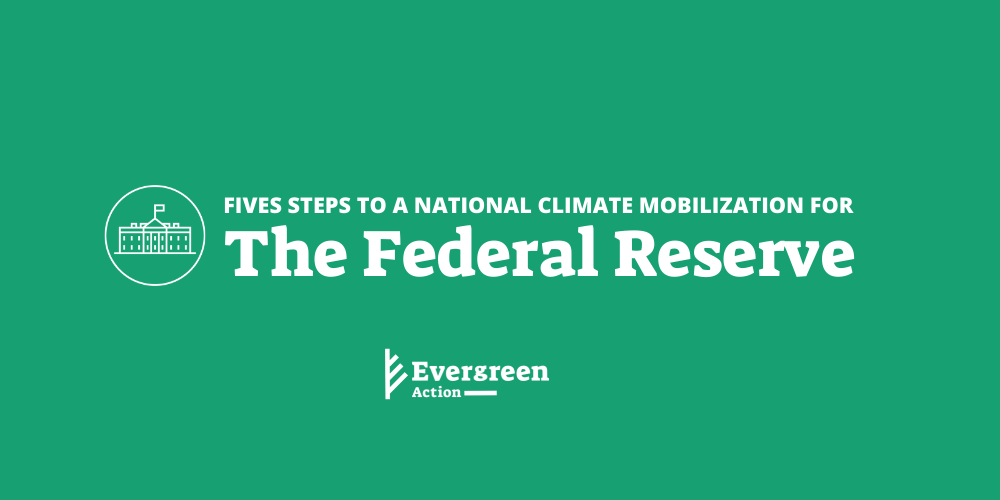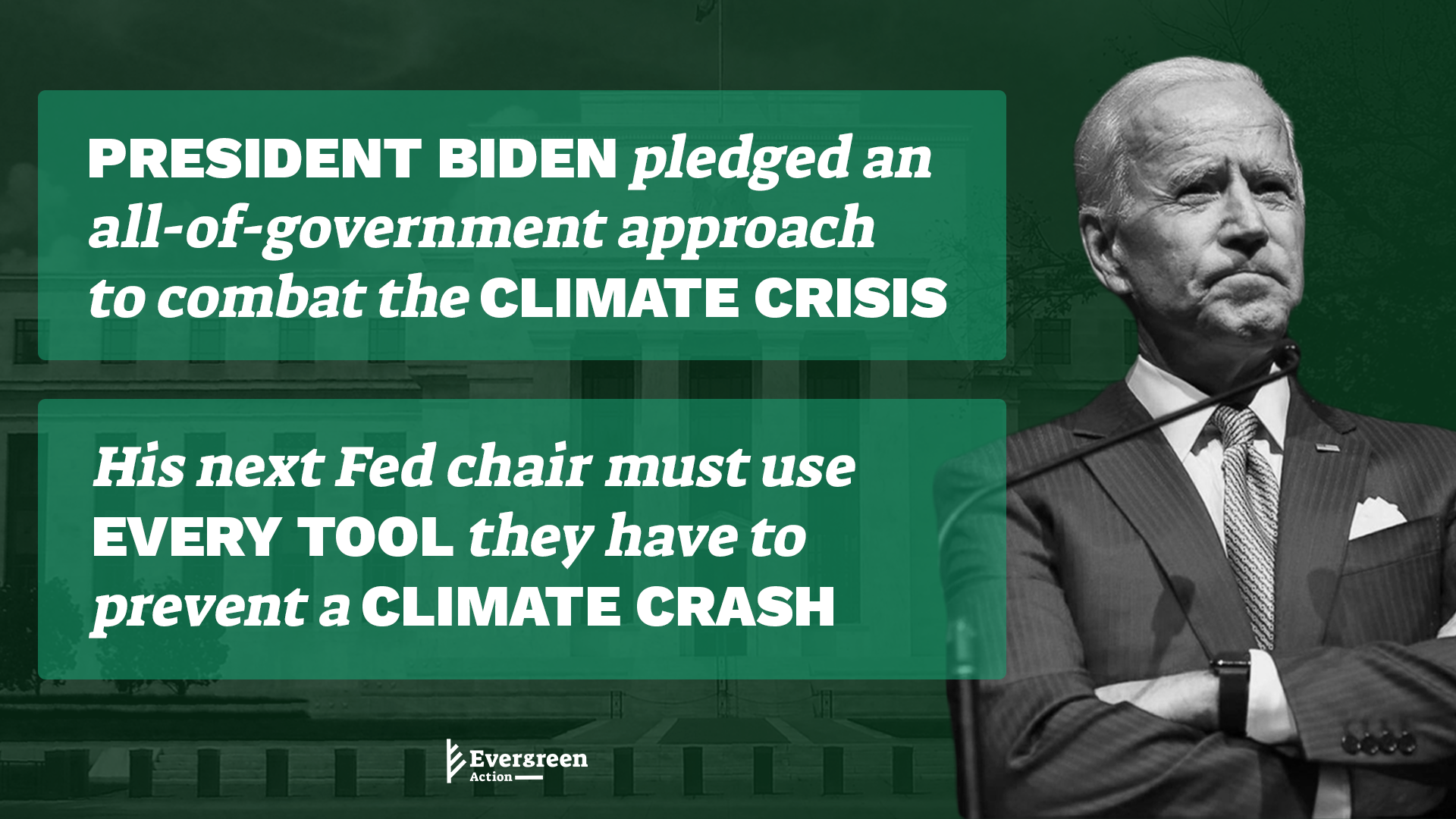1. Creating Mandatory Climate-Risk Disclosure Rules
Wall Street should not be allowed to hide its risky fossil fuel investments from investors and the public, but that’s exactly what they’ve been doing. To remedy this, the next Fed Chair should establish mandatory disclosure rules for all banks, requiring them to share quantitative information on the greenhouse gas pollution associated with the projects and companies they finance so that investors and regulators can understand the real climate risks in their portfolios.
2. Conducting Regular Climate Stress Tests
To ensure that banks are prepared to survive climate-related shocks to the financial system the Fed must conduct regular climate stress tests. The Fed already uses stress tests to assure banks’ resilience to traditional macroeconomic risks by modeling the impact that an economic shock would have on a bank’s profitability and balance sheet. Climate stress tests would operate along the same lines as existing stress tests by modeling how climate-related shocks, including extreme weather events and the low-carbon transition, could impact banks.
The Fed has already signaled that they are developing climate-related scenarios to incorporate into routine stress testing—but while existing stress tests use a horizon line of approximately two years, climate stress tests should look 15 to 30 years down the line to account for the long term nature of climate-related financial risks. With these longer horizon tests, the Fed can then better understand the true risks at play, and help individual financial institutions to take steps to mitigate those risks.
3. Setting Higher “Capital Requirements” For Climate-Risky Assets
To ensure that the risk associated with climate risky assets is accurately reflected on financial institutions’ balance sheets, the Fed should set higher so-called “capital requirements” for assets vulnerable to physical and transition climate risks. Capital requirements are set, in part, according to the risk associated with each type of asset that the bank holds. When required to maintain more capital, these institutions are more able to absorb losses, and are thus more resilient to economic shocks. For climate risky assets, federal regulators should impose higher capital requirements to account for the higher risk that the asset poses to the bank’s stability. Banks with higher exposure to high-fossil assets would then be forced to hold more capital to be responsive to the risks these assets pose to the bank’s financial health.
Higher capital requirements will not only make financial institutions more resilient to climate-driven economic shocks, they’ll also incentivize a shift away from high-risk fossil fuel assets towards more climate-friendly projects. Due to tax treatment and other incentives, banks don’t like having to hold large amounts of capital. So with higher capital requirements for climate-risky assets like coal plants, banks may choose not to take on those assets in the first place.
4. Limiting Investments That Are Not In Line With the Paris Agreement
Wall Street continues to bankroll climate chaos—fueling a vicious cycle that drives worsening climate impacts and therefore even more risk to the financial sector. To address this, the Fed must regulate banks’ “financed emissions” (greenhouse gas pollution that banks finance through their lending and investment portfolios) through “portfolio limits” requiring that each financial institution’s holdings align with science-based emissions targets. Essentially, these limits would keep banks from financing pollution that would drive us above Paris Agreement targets. To align with President Biden’s climate commitments, the Fed should eventually require firms to fully exclude fossil fuels and other high-carbon sectors entirely from their portfolios within a set timeline.
Portfolio limits, by capping high-carbon investments, would help guide investment away from potentially-stranded assets like fossil fuels and toward climate-safe assets like renewable energy. Such shifts would help prevent worst-case outcomes for our economy and our climate, and would preempt additional harm by accelerating the renewable energy transition.
5. Updating the Community Reinvestment Act Regulations To Drive Equitable Green Finance
Structural racism in the U.S. has systematically denied people of color access to equal opportunity and capital, leading to economic inequality, a racial wealth gap that restricts economic growth, and high unemployment and economic insecurity in communities of color. These outcomes represent a failure by the Fed to deliver on its mandate to preserve financial stability and maximize employment. Reflecting the fact that communities of color are also hit first and worst by the impacts of the climate crisis, the Fed can address this injustice with interventions to address both racial inequality and climate risk simultaneously. These policies can help uplift vulnerable communities, reduce the wealth gap, and ensure nobody is left behind in the sustainable transition.
For instance, under the Community Reinvestment Act (CRA), the Fed has the ability and the obligation to drive equitable green finance, but the current implementation of the law fails to fully achieve its goals. To remedy this, the Fed should clarify that the climate needs of low- and moderate-income communities, like coastal resilience infrastructure, urban green spaces, renewable energy projects, and other green investments meet the CRA standards for lending. In addition, the Fed must formally include race and climate on CRA exams to assess how banks are incorporating climate and environmental justice goals into their CRA lending. Banks should receive a “satisfactory” score only if they are actively evaluating climate needs in their lending, and working directly with communities to understand what is most needed.

